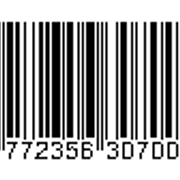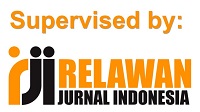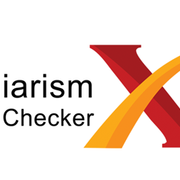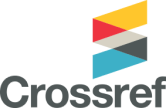Author Guideline
Author Guidelines
GENERAL PROVISIONS
- Articles are the results of research activities in the field of nursery.
- Articles have never been published or are not accepted.
to be published. - Articles are typed 1.5 spaces using ketas kuarto (A4) and Time letters
New Roman 12 for article titles and bodies, 10 for author names, and 11 for abstracts. - Articles are written in Indonesian, and Abstracts in Indonesian and English
- Articles consist of 8-20 pages, including bibliography and attachments
- The article is accompanied by a statement from the author that the article written is correct own work and plagiarism test.
- Articles are sent in softcopy in the form of MS WORD and sent through an account each author at the address http://jurnal.akper-whs.ac.id/
(Times New Roman 12pt Bold, Centered, Capitalize, Max. 15-20 words)
Dyah Restuning P*), Chandra Hadi P**)
(Times New Roman 12pt bold, Centered, without an academic degree)
(Times New Roman 12pt normal italic, Centered)
*Akademi Keperawatan Widya Husada Semarang
Jl. Subali Raya No.12 Krapyak Semarang Telp/FAX.(024)7612988/7612944
**Sekolah Tinggi Ilmu Kesehatan Widya Husada Semarang
(Times New Roman 12pt normal centered)
ABSTRAK
(Times New Roman 12pt Bold, Centered, Capitalize)
Physiotherapy and rehabilitation journal by registering the ISSN number: 2599-2791 (online) 2548-8716 print) is a journal published twice a year in January and July by the Akademi Fisioterapi Widya Husada Semarang. Our journal aims to publish conceptual articles, review articles and research articles in the field and related to physiotherapy.
Introduction consist of background, problem formulation, objectives, and relevant literature citations. only received articles from original findings (main priority), and new scientific review articles (non-priority) (Bekker et al., 1999; Bezuidenhout et al., 2009). The decision on whether the scientific article is accepted or not in this journal will be the Editorial Board’s right based on peer reviewers’ recommendation (Bhaktavatsalam & Choudhury, 1995). Using font size 12 with Times New Roman font, justify, indentation 0,75 mm, line spacing 1,5 lines. If articles written in indonesian the foreign words should be italicized.
METHOD
Method consist of research methodology, including: type of research, place of research, population, sample, method of sampling, data collection and analysis of data described in a concise and clear.
Corresponding Author should be marked with an asterisk and followed by a comma "*)" as the example above. At the bottom of the left column on the first page/abstract, it is written the Corresponding Author’s mark and his/her email address (see example). Article revisions and final decisions will only be communicated through the Corresponding Author’s email.
If there is more than one author, write the authors’ names separated by a comma (,). If the author's name consists of two words, the first name should not be abbreviated. If the author’s name consists of only one word, write his/her actual name in one word. However, the online version (HTML) will be written in two words consisting of the same name (repeatedly) for metadata indexation purpose (Camdali & Tunc, 2006; Fridman, 2008).
DISCUSSION
The discussion refers to a review related to the results of previous physiotherapy and rehabilitation studies, related to theory, evaluation of research results and or policy provisions, aimed at users including policy makers, practitioners, academics, students and other general users. Discussion is written concisely, focusing on the interpretation of the results obtained, and not a repetition of the results section. The discussion was carried out comprehensively and aimed at providing information about the development of physiotherapy and rehabilitation science and technology in Indonesia, utilization, problems and solutions.
- Table: Tables should be given a brief but clear title with sufficient notes, including the source, so that each table is able to explain the information presented independently. Each table is numbered sequentially and is reviewed in the text. All symbols, terms and abbreviations in the table must be explained in the description ...
- Images, Graphics and photos: All symbols and abbreviations in images and graphics must be e xplained. As in the table, the information on the graph must be sufficient so that it can be presented independently. Images and graphics must be reviewed in the text. Black and white or colored photos should be of good quality. Each picture and photo is numbered sequentially and is reviewed in the text.
CONCLUSION
Conclusion states the answer of the hypothesis and/or research objective or scientific finding. Conclusion is not the repetition of findings and discussion, but it is the summary of findings as expected in the objective or hypothesis. If necessary, conclusion can also be ended with the next idea to be implemented to the study.
ACKNOWLEDGMENTS
Acknowledgments are primarily addressed to research funders or donors. Acknowledgments can also be dedicated to people who contribute in the study.
REFERENCES
References are arranged alphabetically according to the first name of the first author. Each literature announced in the bibliography must be quoted (cited) in the text, and vice versa each quote (citation) must be included in the bibliography.
The list of primary literature from several authors is expected to be more than secondary literature, and literature from within the country are more than literature from abroad. Manuscripts with many literature from abroad can be accepted if there are problems that are received favorably or directly on Indonesia. The literature has been strived for the last 10 years.
Writing literature on texts uses a "name-year" system with two forms, for example Hakim and Sutarman (1991) and (Hakim and Sutarman, 1991). If more than one literature is approved together, the writing is compiled based on the year published. For example, (Harahap 1993; Roesdiyanto and Purwantini 2001; Simanjuntak 2002; Setioko 2003; Suparyanto 2004). If there are more than two authors, the author's last name is first attended by et al. However et al. cannot be used in the Bibliography All names of authors and editor names must be written in full in the Bibliography. Avoid using unpublished literature..
EXAMPLE OF CITATION:
Journal Article
Davis DS. Paul E. Ashby KL. McCale JA. McQuain, and Wine JM. (2005). The effectiveness of 3 stretching techniques on hamstring flexibility using consistent stretching parameters. Journal of Strength and Conditioning Research, 19 (1): 27–32.
Book
Adler, S.S. Beckers, D. and Buck, M. (2008). PNF in Practice an illustrated and guide third edition. Springer. Germany.
Thesis/Disertation
Agustin D. (2013). Pengaruh Pemberian Autostretching Terhadap Fleksibilitas Otot Hamstring Pada Kasus Tightness Hamstring. Skripsi. Universitas Muhammadiyah Surakarta
Proceedings Manuscript
Nurratri, A. K., A. Widodo, D. Oklandary, E. V. Saraswati, L. Sukmawati, N. D. Purnamasari, N. I. Swariningrum, Y. K. A. Rahmawati. (2018). Upaya Preventif dan Edukatif De Quervain’s Syndrome pada Pengguna Smart Phone di Kalangan Remaja. hlm. 493-499. Prosiding Bidang MIPA dan Kesehatan The 7th URECOL 2018 Implementasi Perguruan Tinggi dalam Desiminasi Penelitian dan Pengbadian kepada Masyarakat. LPMM STIKES PKU Muhammadiyah, 10 Februari 2018. Konsorsium LPPM PTM/PTA se-Jawa Tengah dan DIY.
Online Manuscript
Doyle, G. 2014. The Procedures for Sports Massage. [Online]. Tersedia di: http://www.time-torun.com/massage/Procedures.htm.Diakses 25 April 2015.











